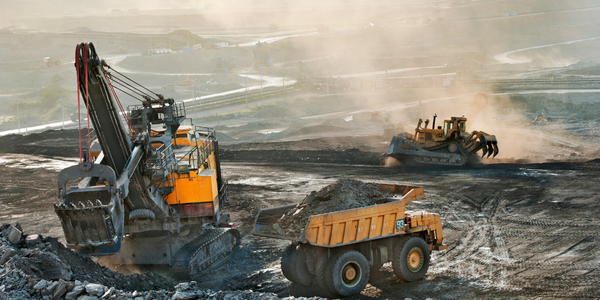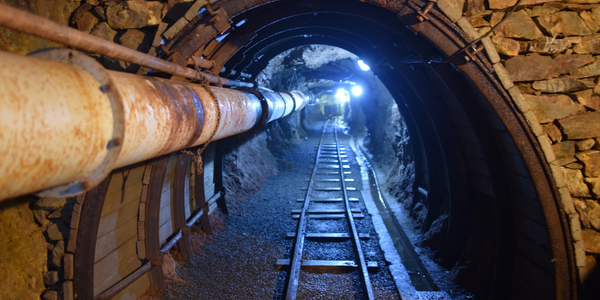公司规模
SME
地区
- Pacific
国家
- Australia
产品
- QlikView
- Mining Enterprise Resource Management (ERP) system
技术栈
- Data Extraction
- Reporting Tools
- Business Intelligence
实施规模
- Enterprise-wide Deployment
影响指标
- Productivity Improvements
- Cost Savings
技术
- 分析与建模 - 实时分析
适用行业
- 矿业
适用功能
- 维护
用例
- 预测性维护
服务
- 数据科学服务
关于客户
La Mancha Resources is a global gold mining company with significant projects in both Australia and Africa. The company employs 150 on-site workers in Australia, with another 10 employees based in a corporate office in Perth. Classed as a small-to-medium sized gold producer in Australia, it operates both an underground and open cut mine just outside of Kalgoorlie in Western Australia. Founded in 2006, La Mancha Resources Australia began as a small mining company focusing on exploration but in only three years it was being commissioned for larger production projects. At this point in time, it was clear to the business that it needed to place a greater focus on implementing systems in order to operate more efficiently. In July of 2009, the company installed Scope System’s Mining Enterprise Resource Management (ERP) system to track and report on company data.
挑战
La Mancha Resources Australia, a gold mining company, was facing several challenges. The month-end and year-end reporting process was time-consuming, and there was little transparency on the allocation of costs. Some departments were not fully utilizing the existing systems. The company had implemented an ERP system in 2009 to track and report on company data. However, they wanted to leverage their data to enable decision-making through reporting and analytics. They began evaluating several data extraction and reporting tools.
解决方案
La Mancha Resources Australia implemented QlikView in January 2011. It currently has 25 named users with full access to the product, as well as five read-only users who can each access one dashboard relevant to their department. The product was selected for its ease of use, rapid time to deployment and flexibility. One of the key benefits of QlikView is that data could be extracted from any database, not just an ERP system. There are no limits to where you can source the data from. As part of the initial implementation process, Williams was responsible for training company staff. Despite scheduling a 30-minute training session with each employee, they only needed about 10 to 15 minutes each, and then they were able to explore the product on their own.
运营影响
数量效益

Case Study missing?
Start adding your own!
Register with your work email and create a new case study profile for your business.
相关案例.

Case Study
Underground Mining Safety
The goal was to produce a safety system to monitor and support underground mining operations; existing systems were either too simple (i.e. phone line) or overly complex and expensive, inhibiting deployment, and providing little-to-no support in event of an accident. Given the dangerous nature of the mining work environment and the strict regulations placed on the industry, the solution would have to comply with Mine Safety and Health Administration (MSHA) regulations. Yet the product needed to allow for simple deployment to truly be a groundbreaking solution - increasing miner safety and changing daily operations for the better.

Case Study
Mining Firm Quadruples Production, with Internet of Everything
Dundee Precious Metal’s flagship mine, in Chelopech, Bulgaria, produces a gold, copper, and silver concentrate set a goal to increase production by 30%. Dundee wanted to increase production quality and output without increasing headcount and resources, improve miner safety, and minimize cost.

Case Study
Fastenal Builds the Future of Manufacturing with MachineMetrics
Fastenal's objective was to better understand their machine downtime, utilization, quality issues, and to embrace cutting-edge manufacturing technology/process improvement capabilities to bring their team to the next level. However, there was a lack of real-time data, visualization, and actionable insights made this transition impossible.

Case Study
Joy Mining Systems
Joy equipment faces many challenges. The first is machine integration and control. The business end of the machine has a rapidly-spinning cylinder with 6-inch diamond-studded cutting teeth. It chews through rock at rates measured in tens of tons per minute. The system grinds through the rock in front, creating a rectangular mine tunnel. Hydraulic lifters support the ceiling as the machine moves forward. Automated drills and screws drive 3-ft long screws into the ceiling to stabilize it. The rock and coal fall into a set of gathering "fingers" below the cutting cylinder. These fingers scoop up the rock and coal and deposit it onto a conveyor belt. The conveyor passes under the machine and out the back. A train of conveyor belt cars, up to a mile long, follows the cutter into the mine. The rock shoots along this train at over 400 feet per minute until it empties into rail cars at the end. Current systems place an operator cage next to the cutter. Choking dust (potentially explosive), the risk of collapse and the proximity of metal and rock mayhem make the operator cage a hazardous location.

Case Study
Improved Monitoring in Industrial Manufacturing Facility
When your crane is moving tons of magma-hot iron, you can’t afford an unexpected failure. McWane Ductile knew monitoring the crane motor metrics within their facility could help prevent a mechanical failure that would strand an enormous bucket of molten metal overhead. Unfortunately, their legacy wired monitoring system couldn’t work with moving objects in this extreme environment. If they could integrate wireless capabilities into their existing equipment they could extend their monitoring capabilities without starting over from scratch.




